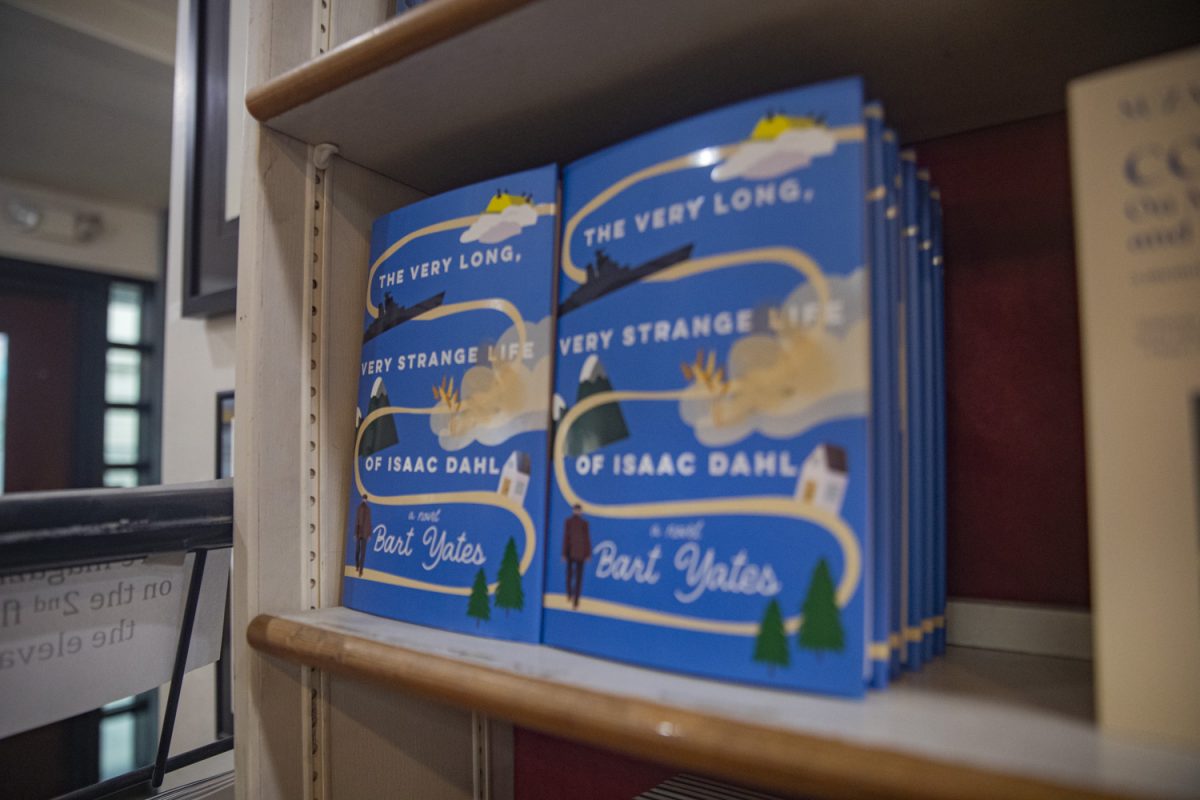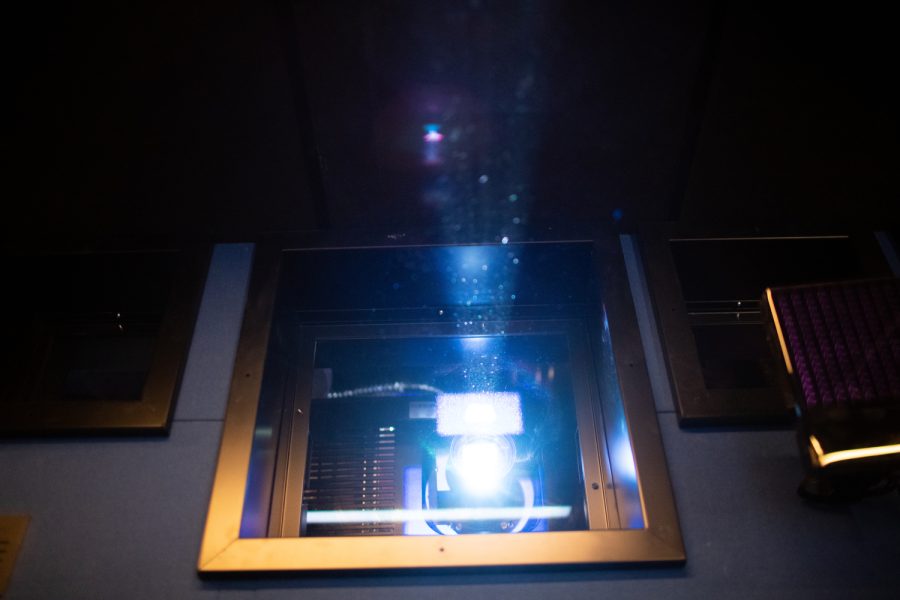Walking into the exhibit room, individuals are met with dim lighting that serves a great purpose: to preserve artifacts from a pair of Iowa’s most innovative minds.
Film catalogues, magic-lantern slides, letters, managerial reports, and other curios from the lives of W. Frank and Indiana Brinton take center stage in the newest special collection at the Main Library.
The collection, Brinton’s Famous Moving Pictures: The Emergence of Early Film in America, tells the story of the longest continually running movie theater in the world, located in Washington, Iowa, and the inventive husband and wife who ran it.
“The Brinton collection [pieces] … are the originals,” said John Richard, who worked as the director of photography for the 2017 film Saving Brinton. “They’re on nitrate film, an explosive old film type.”
The film details Washington, Iowa, native Michael Zahs’ discovery and restoration of the long-lost Brinton movies. Frank and Indiana Brinton operated their theater, the Graham Opera House, in Washington from 1897 to 1918 before selling it.
“In the collection are all types of films, but they’re all short,” Richard said. “The longest is 12 minutes .… the latest films, from around 1908, are narratives with a plot … there were few of those in those days.”
RELATED: Magic lanterns share the magic of history
For UI sophomore Genevieve Cleverley, who was employed at the Graham Opera House, knowing the Brinton’s legacy is all in a day’s work. The Washington native worked there during the summers throughout her high-school years.
“Our old boss used to give tours, and there was lots of old stuff in the back. It was always a cool historical place in our town, but not … really historical until recently,” Cleverley said.
She noted that the theater’s past came into play when the Oscar-winning 2011 film Hugo included the works of early French film director Georges Méliès. Two of Méliès’ films, once thought lost, had been discovered by Michael Zahs in the Brinton Collection in 1981.
Six films in the exhibit are projected onto the walls, all ones that the Brintons themselves hosted in their theater. More information explains the history of how the Brintons coped with the advent of World War I and how they began to show war-propaganda films in addition to comedies and dramas.
Outside is an interactive map with information about where the couple traveled as they showcased their magic-lantern slides and early films to audiences in Texas, Minnesota, Pennsylvania, and beyond.
Elizabeth Riordan, a graduate assistant in UI Libraries Special Collections department, helped form the narrative that visitors to the Brinton Collection can follow as they examine the artifacts. She also selected the pages that the massive, aged ledgers are flipped to to show prime examples of the films the Brintons played.
“What I love about exhibit is that it’s important to get as many color films as possible … there was always music playing, a lot of films were hand-colored, and I love it when it defies people’s expectations,” Riordan said.
The exhibit will run through Aug. 3.













